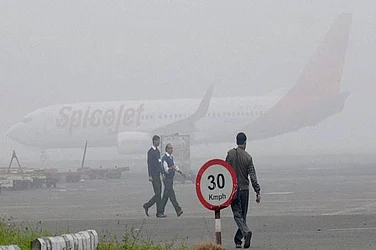In 2019, the Gujarat Forest Department launched an ambitious project to radio collar 89 Asiatic lions. Twenty-five per cent of the radio-collared Asiatic lions died one year after they were collared. This was said to be one of the largest radio collaring projects across the country. The forest department had procured 75 tracking collars and had tagged 89 lions. It was presumed that 14 lions had died.
Pan to 2023. The death of nine cheetahs in the Kuno Sanctuary has again reignited the debate on radio-collaring animals and the purpose it serves. An expert, who did not want to be quoted, says that many of the radio collaring programmes are not based on scientific methodology. “The forest department is doing it to make their work easy. Radio collaring, when not done properly, leads to severe behavioural changes in animals,” said the source. In the Gir radio-collaring project, the collars were procured by the state at a cost of Rs 6.5 lakh per piece. The purchase was done in October 2018, in the aftermath of the canine distemper virus infecting and killing 29 Asiatic lions in the Gir forests in Gujarat. The weight of the collar is approximately 1.5 kg and sits heavily on the neck of the animal.
“The animals try to pull it off with their mouths and often injure themselves. When collaring a young male, allowances have to be made for the broadening of the neck. Besides, carrying such a heavy weight around the neck is uncomfortable for the animal,” said the source.
The Gujarat Forest Department’s large-scale radio-collaring programme of Gir lions had drawn sharp criticism from all quarters as the lions started dying. It is generally the young lions who are radio-collared as the death rate in that population is considered to be low. According to the source, the collars are old or from animals that have died. This is the reason for the death of animals that have been radio-collared. Don’t blame the collars for the inefficient manner in which it has been done,” says the source.
According to Dr Ravi Chellam – CEO of Metastring Foundation and Coordinator, Biodiversity Collaborative – radio telemetry has been a well-established research method for over 60 years now. “Species ranging in size from hummingbirds to blue whales have been radio-collared to help collect data to better understand their ecology and to inform conservation planning. It is a mess of immense proportions. It is staring at us but if we are in denial, we will not recognize it.”
Referring to the mass radio collaring of the Asiatic lions in Gujarat, Chellam feels that this project was undertaken post the death of dozens of lions in 2018. “This was poorly planned without clearly articulated research questions. There has to be a good scientific reason for radio-collaring animals.”
Speaking to Outlook, a source involved in the radio collaring of leopards in the Sanjay Gandhi National Park in Mumbai says that though Maharashtra has been radio collaring tigers and leopards, the fatalities are much less. “There has to be a scientist with the programme. Both the cases involving the Gir lions and the Kuno cheetahs had scientists working with the programme. It is a scientific methodology that was wrongly implemented,” says the source.
“The deaths take place due to infections from using old collars or those picked from an animal that was infected and dead, In the programmes we are implementing in Maharashtra, we are extremely careful on the type of collars were are using. We don’t do mass collaring, it is a low number for the purpose of scientific study,” says the source.
Radio collaring leopards is tricky, says a person who is working with these big cats. “Leopards are difficult to spot, unlike cheetahs, lions and tigers. With these animals, we can drive as close to them and try to tranquillize them. Once they are tranquillized then the radio collar is put around the neck. However, with leopards, we cannot use the tranquillizer in the open, even if we track them. We have to use the home trap to tranquillize them. The radio collar them. But we do this in small numbers. It cannot be on a large scale,” says the source.
The new technology has brought in drop collars, where the radio collars fall off with the use of remote sensors. Before the monsoons, the radio collars of the leopards in the Sanjay Gandhi National Park were taken off as the heavy Mumbai monsoons will cause infections beneath the collar.


























